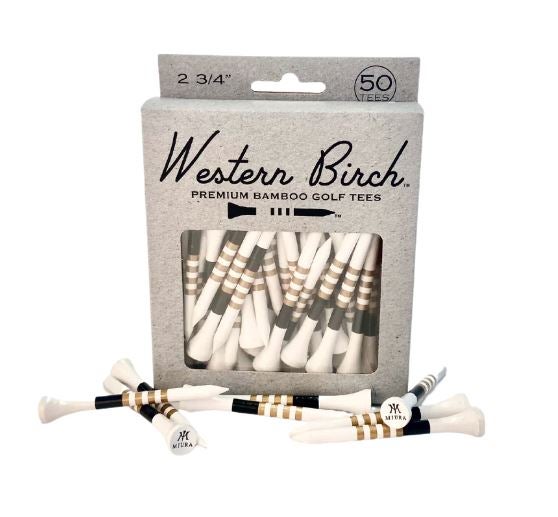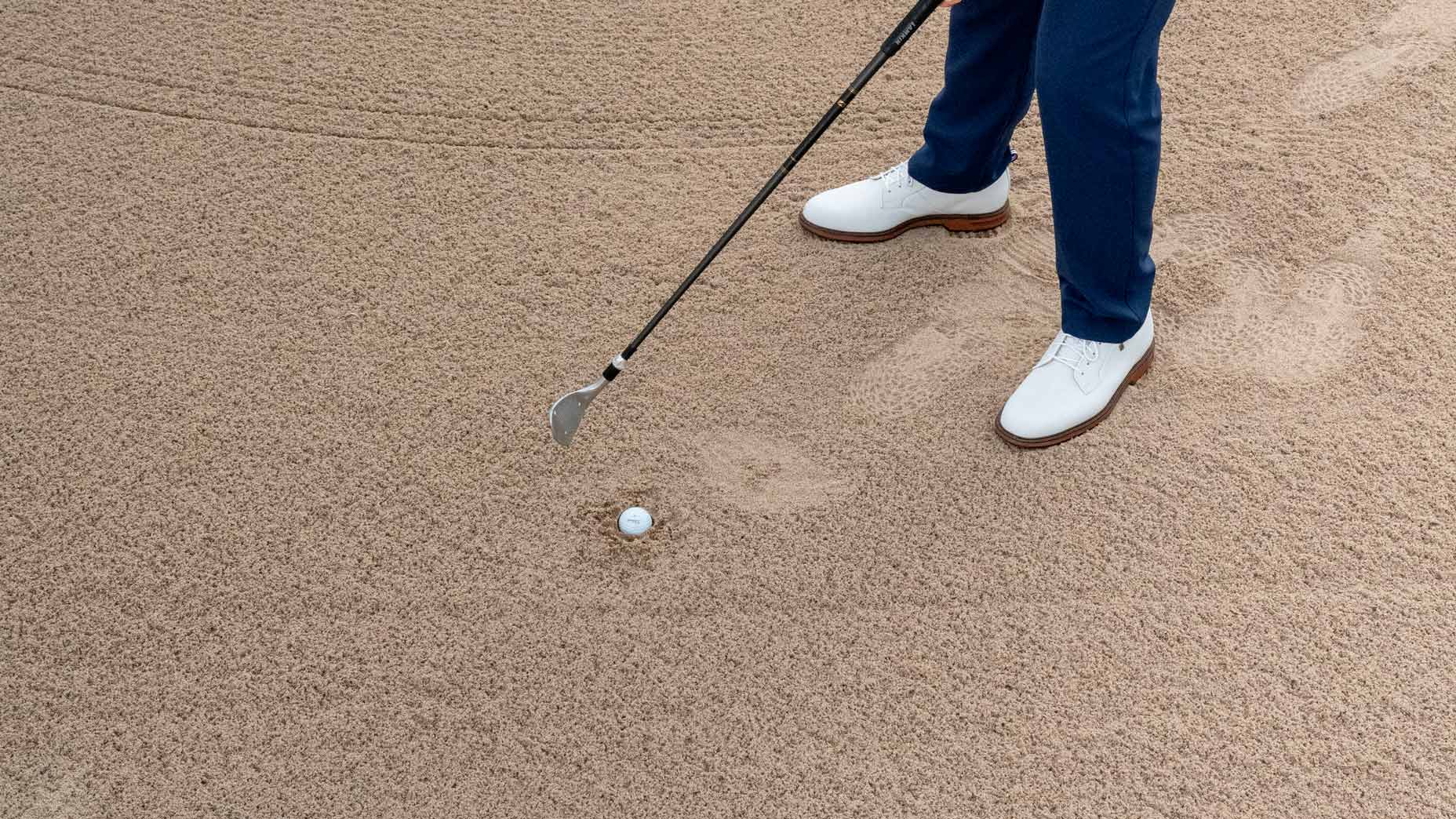10 different ways a golf tee can improve your training

Could a simple golf tee be the secret to practicing your best?
Getty Images
While most players just use a golf tee for holding their ball up before a first shot, they might be surprised to know that using a tee in other ways can help improve their game.
Don’t get me wrong, there are plenty of amazing golf training aids out there that can help make you better. But one of the simplest is already in your bag — so I’m sharing 10 ways that a golf tee can be used to do so.
Use a tee in 10 different ways to improve your game
I love explaining to students how versatile a golf tee can be. Once they understand how to use them properly for training, the player often incorporates some of the following into their regular practice routine.
So take a look below to see how you can do the same — all thanks to the simplicity of a tee!
1. Center-face contact – miss the outside tees
Want to improve your contact and the result of your shot? Start by hitting the center of the clubface.
A good way to help do this is by placing two tees on both sides of the ball (creating a gate). Now swing the club and, at impact, attempt to pass the clubhead through the gate without hitting either.
2. Hit the forward tees – basic version
To get the golf ball into the air, the club needs to hit the ground. Once it makes turf interaction, the club should stay along the ground after the golf ball to make a proper divot.
This is where practicing with instant feedback is important.
Place your ball on a low tee and stick two tees in the ground on the target side of the ball, with both sticking up just slightly. This is a great drill to ensure you hit the tee that the ball is on, but also that your clubhead hits all of the forward tees as well.
If you frequently top or thin your shots, this is a good way to cure the bad habit.
3. Scrape the forward tee – advanced version
A more advanced version of hitting the forward tee is to place your ball on the ground and lay a tee on its side (on the target side of the ball). Your club should hit the ground and also stay low enough to the ground to scrape the tee off of the ground, making it also fly into the air.
If you aren’t comfortable with hitting the ground, this can be a great drill to train yourself.
4. On par 3s – break your tee
If you’re using a tee with any club but your driver, you should always break the tee in half — as well as make good contact with the ball.
If you break the tee, you’re likely hitting the lofted part of the clubface. This also means you’re using enough swing speed, which is great feedback for finding the proper motion.
When you don’t break the tee, it means you’re probably hitting it thin and not maximizing your shot.
5. While using driver – don’t break your tee
Just as you should break the tee while using an iron, the opposite is true when swinging your driver.
Sure, you might hit the tee out of the ground once in a while, but breaking the tee with your driver is a sign that your downswing is too steep, often resulting in the distance-robbing pop up.
Always make sure to set up properly, with the ball position forward and your shoulders tilted (with your lead shoulder slightly higher than your trail shoulder). This helps produce a path that causes the ball to ascend correctly, helping get the most distance.
6. Correct your over-the-top path
One of my favorite things to do is to use golf tees to help improve the swing path of my students.
Place the tees where you don’t want the clubhead to go and avoid making contact with them. If you tend to come over-the-top — which would result in pulls and cuts or slices — place one tee on the back side of the ball toward the outside, and one tee on the target side of the ball toward the inside.
Now, use an alignment stick so that you consistently keep your aim, making it easier to pass through the tees.
7. Correct your in-to-out path
If you tend to produce pushes and hooks, you can use the tees from above in the opposite setup.
So simply place a tee behind the ball on the inside and a tee on the target side on the outside of the ball. If your club hits either tee, you haven’t improved your in-to-out path.
8. Bunker – hit a buried tee
Hitting out of a greenside bunker is difficult, but it’s important to remember that you must splash the sand in order to get the height and contact you desire. This helps you avoid trying to scoop beneath the ball.
By burying a tee into the sand, you can help get this feel.
Take a tee and bury it directly underneath your ball. Now practice taking enough sand to also move the tee, which will show you the right motion for bunker shots, while also helping you avoid the mistake of trying to get the ball out of the sand incorrectly.
9. Secure hands – place a tee in your fingers
When placing your hands onto the grip of the club, your hands should be secure but not tight.
To get this feeling, place your hands on the club and slip the small end of the tee between your fingers and the grip of the club. Now make sure to keep the tee in place.
If you let go, the tee may shift or move. But by training yourself to be secure with your hands, you’ll have more control of the direction of your ball.
10. Break the tee to avoid topping it
A common issue for plenty of amateurs is topping the ball. If this is something you struggle with, try simply placing the ball on a low tee and breaking that tee. This offers great (and instant) feedback, reminding you to get the club down to the ground and hitting the center of the face.











